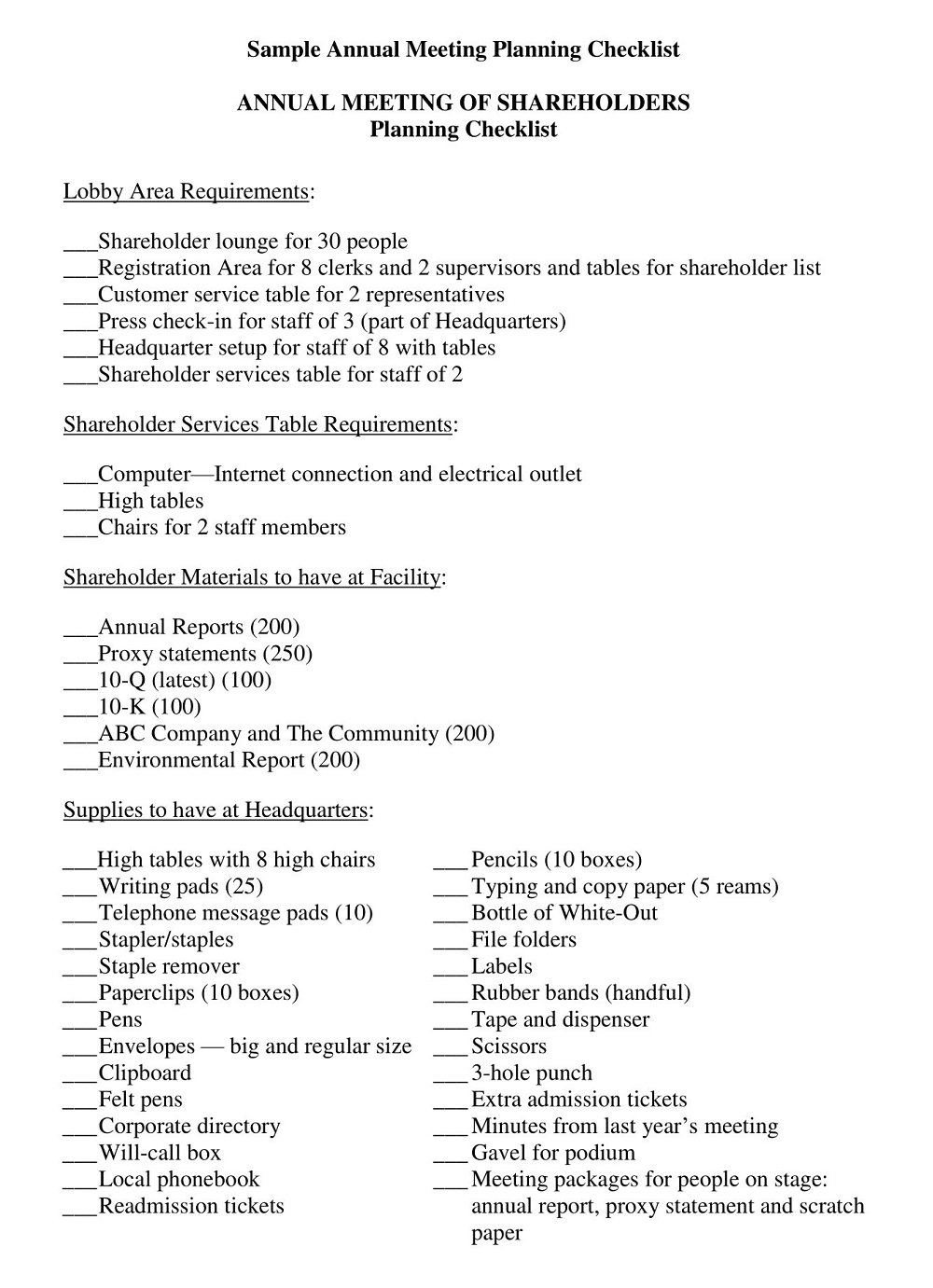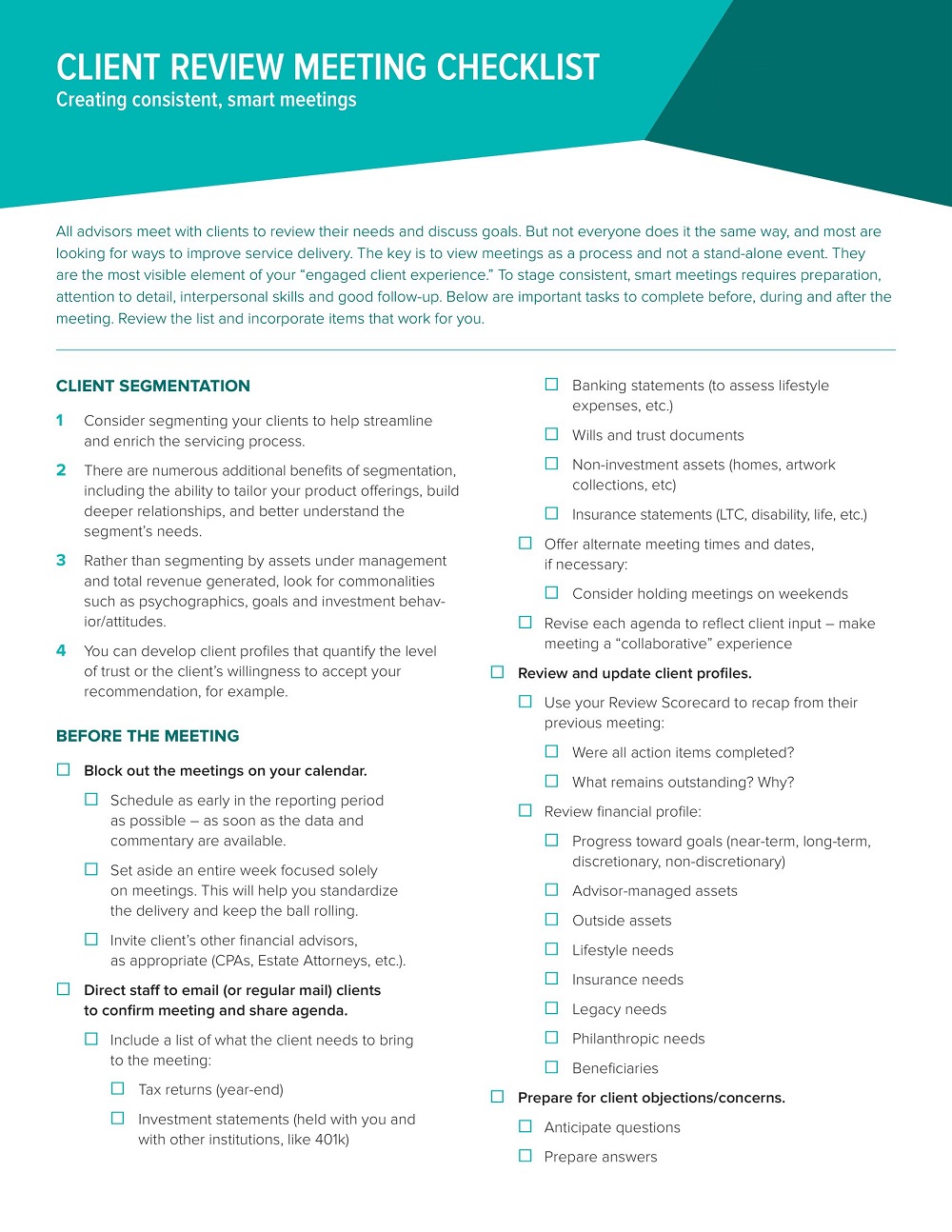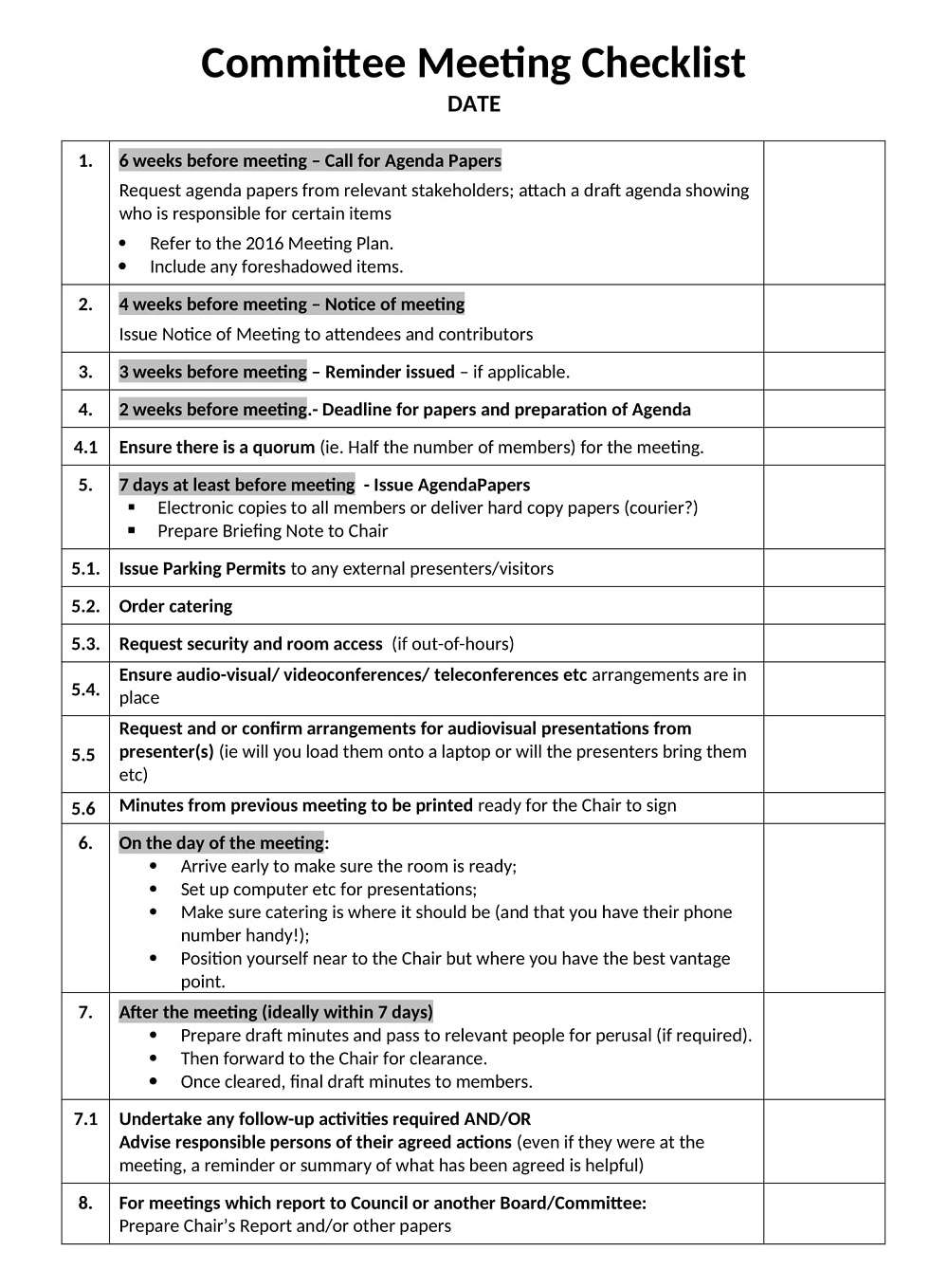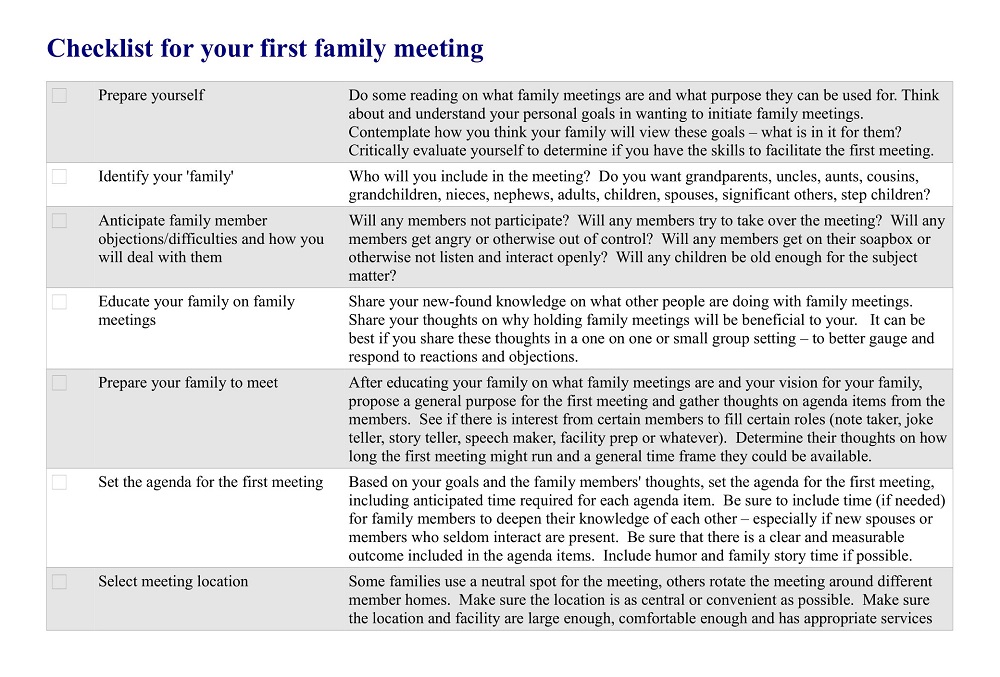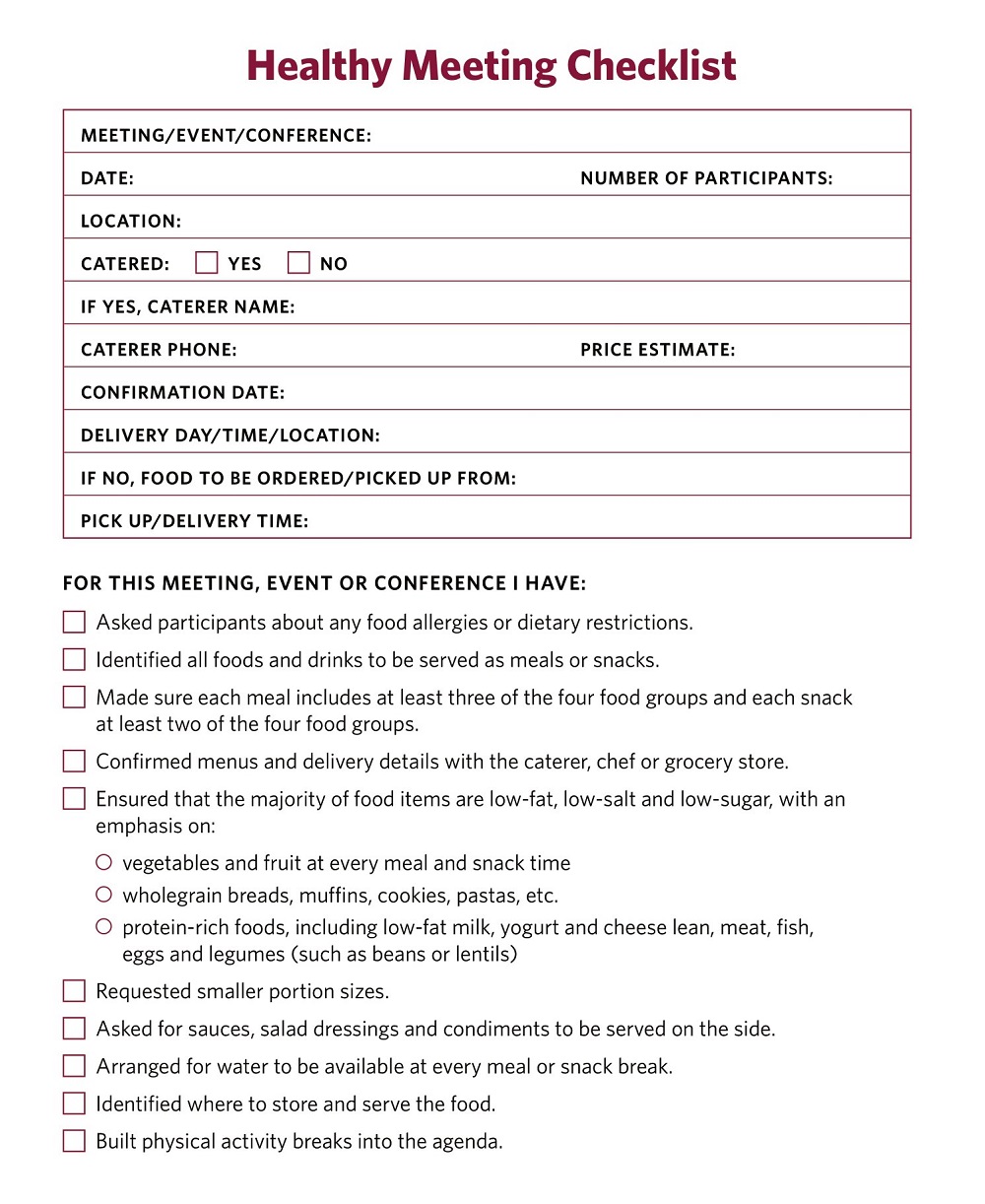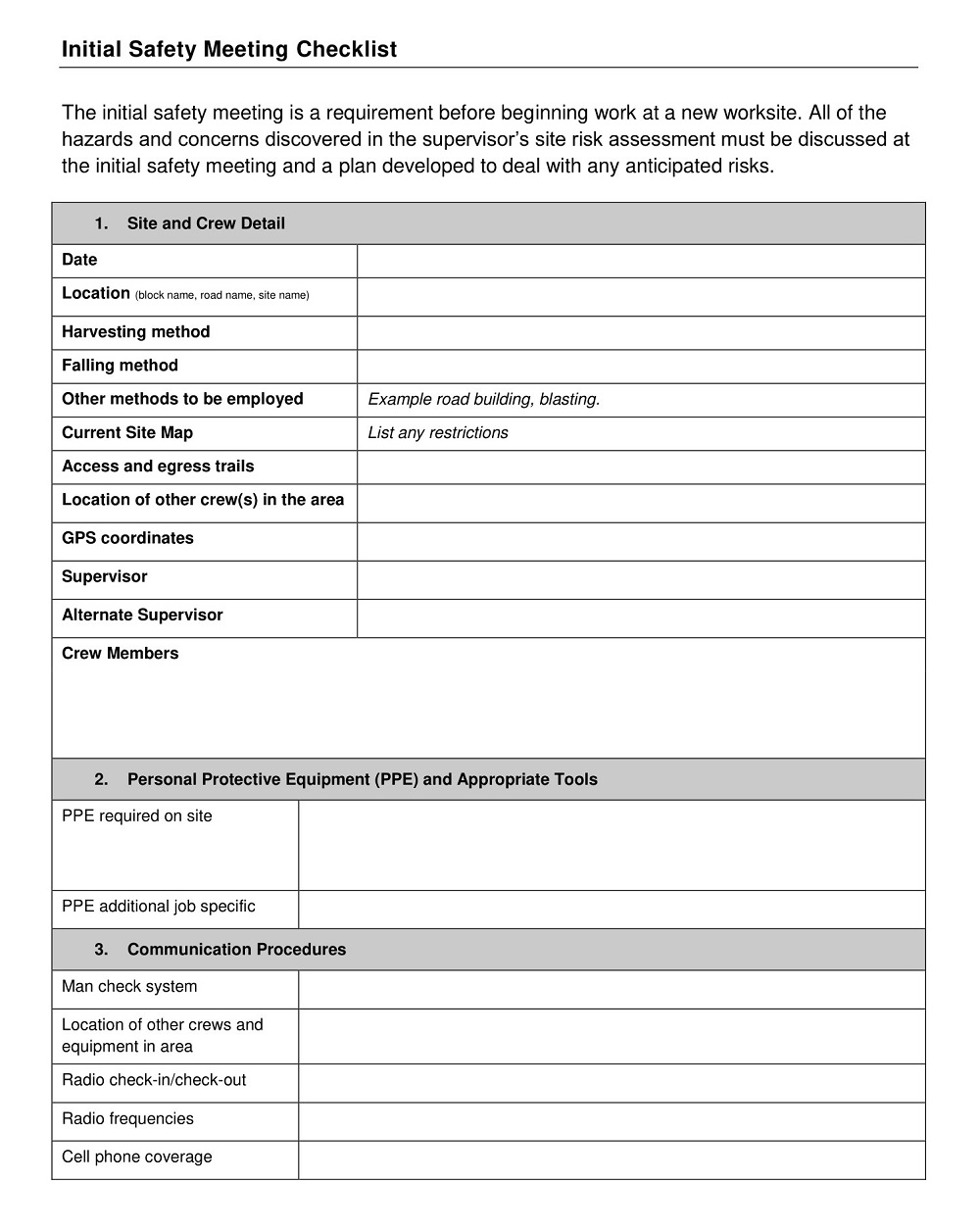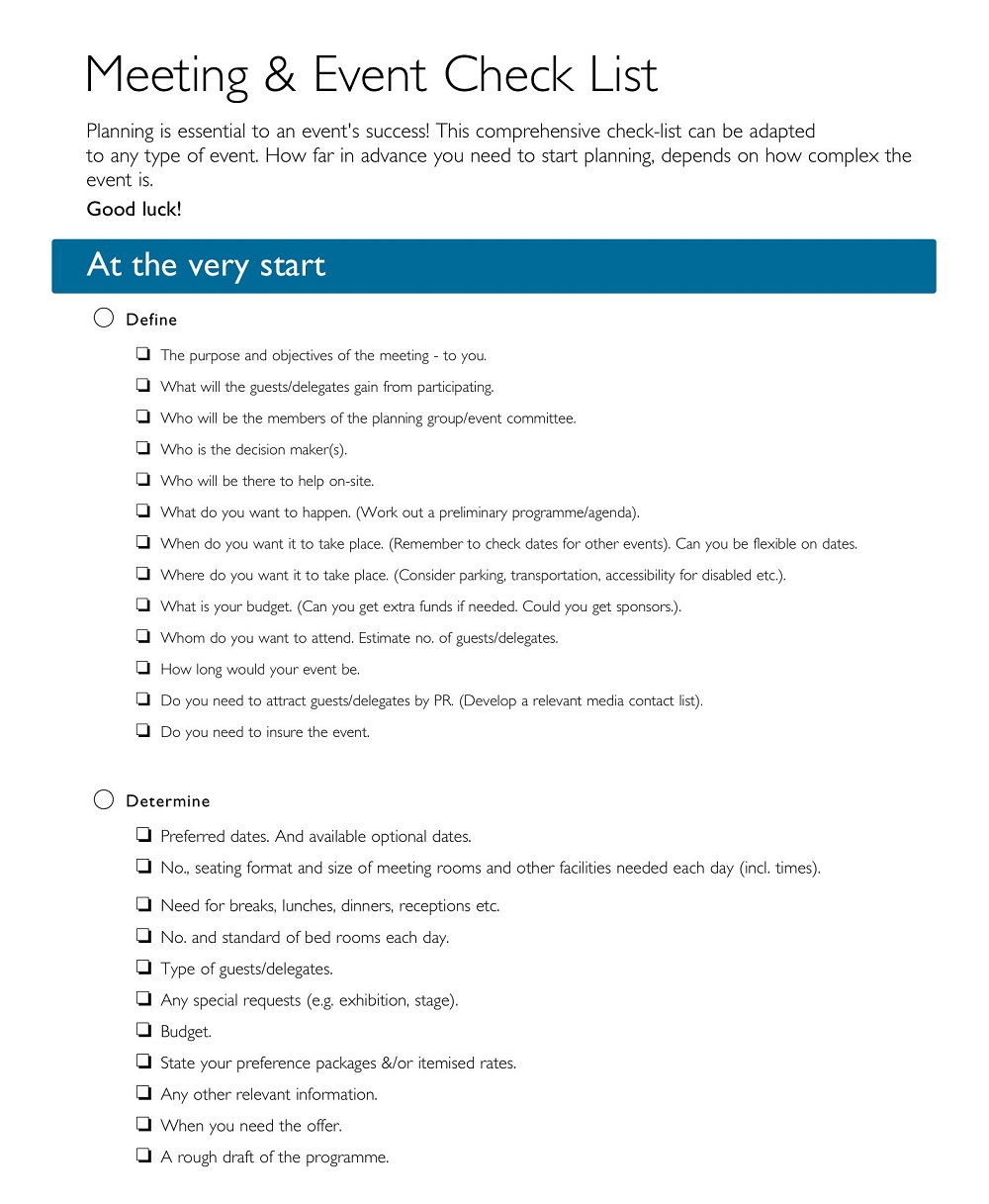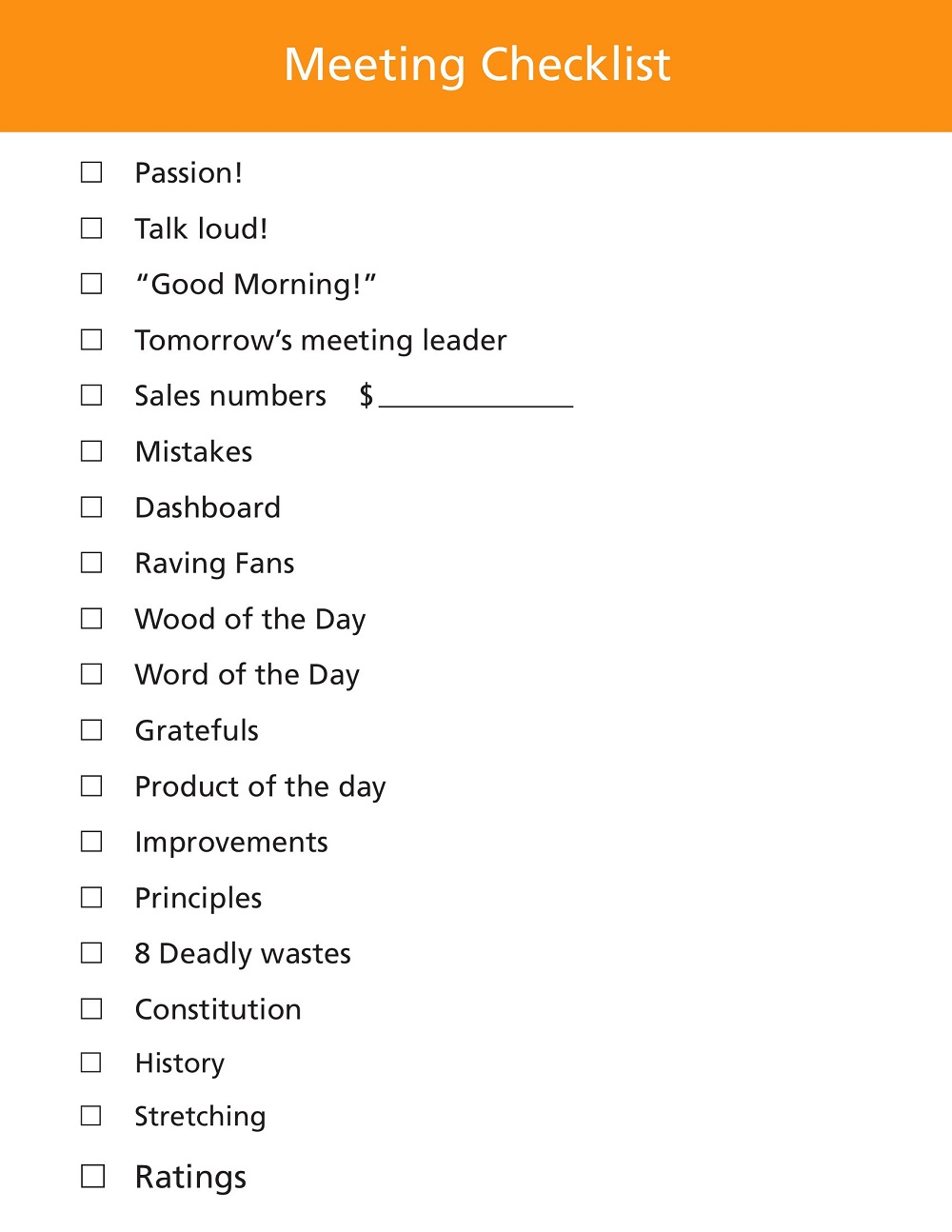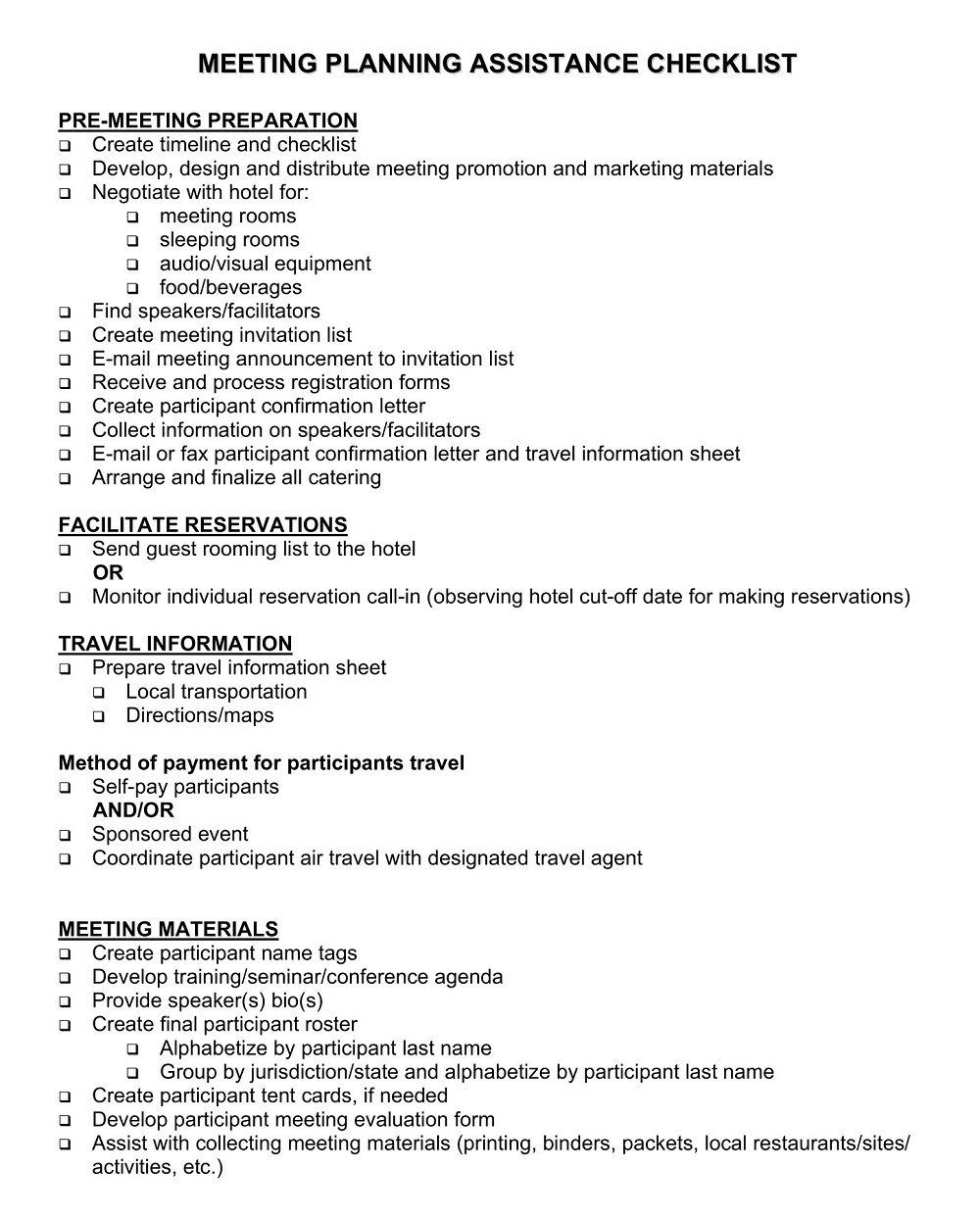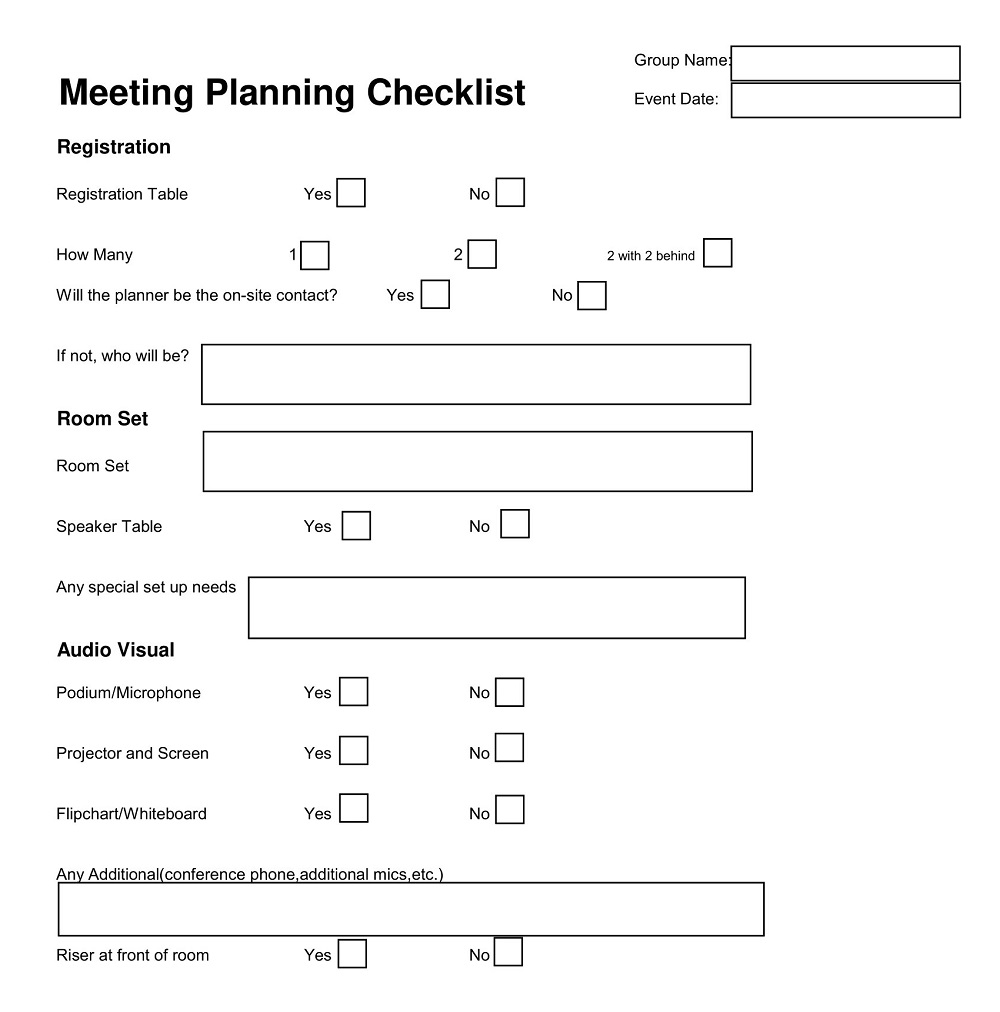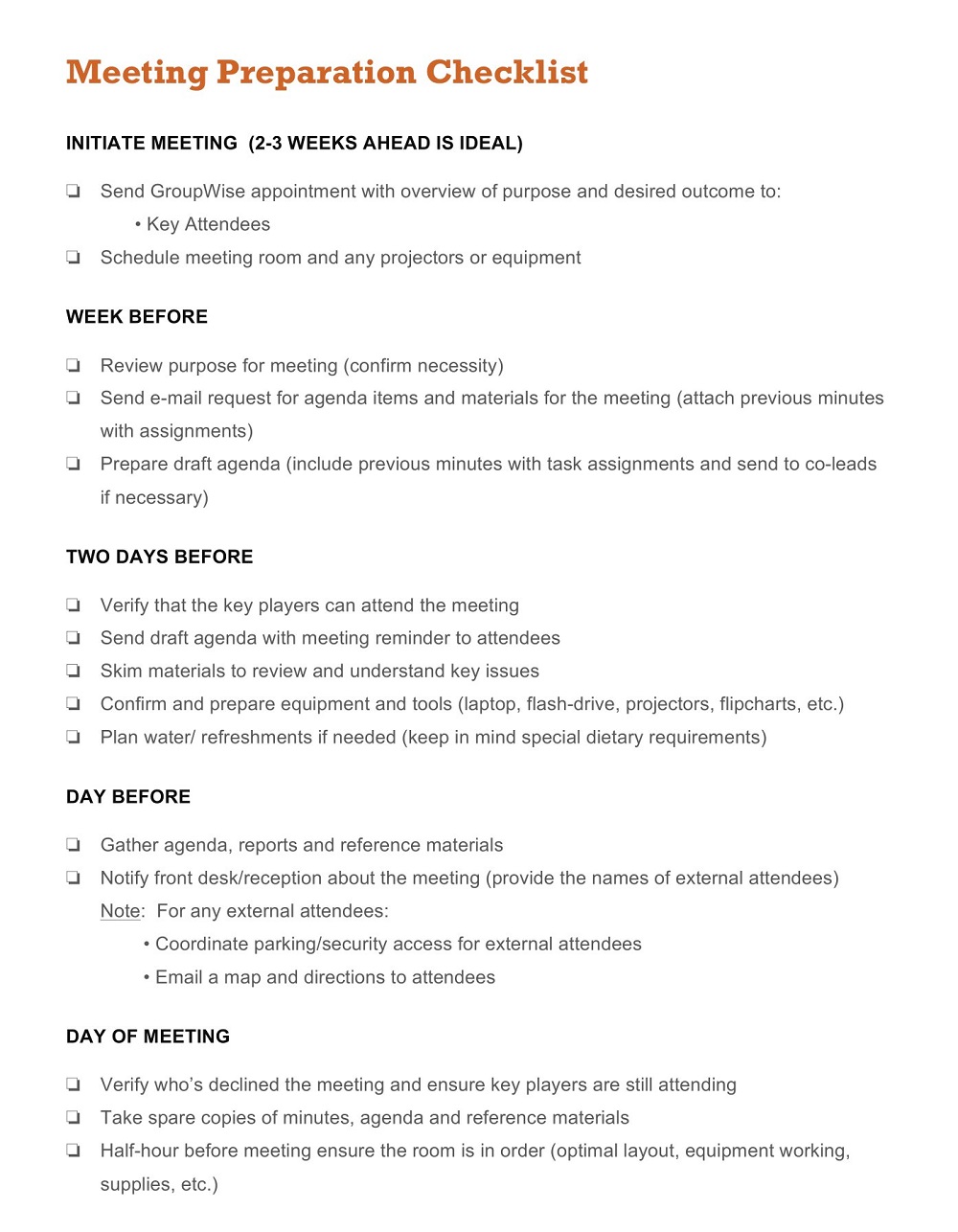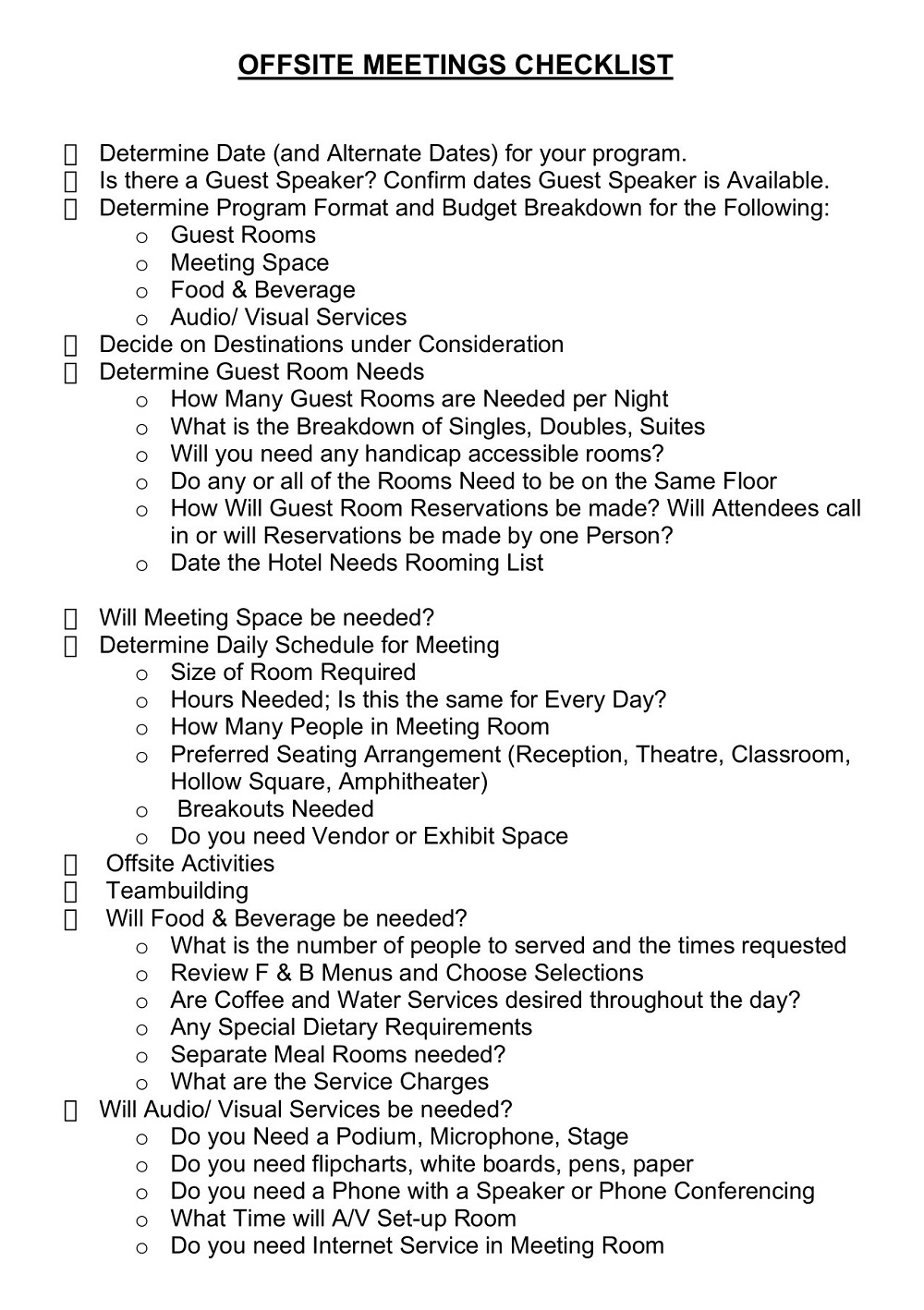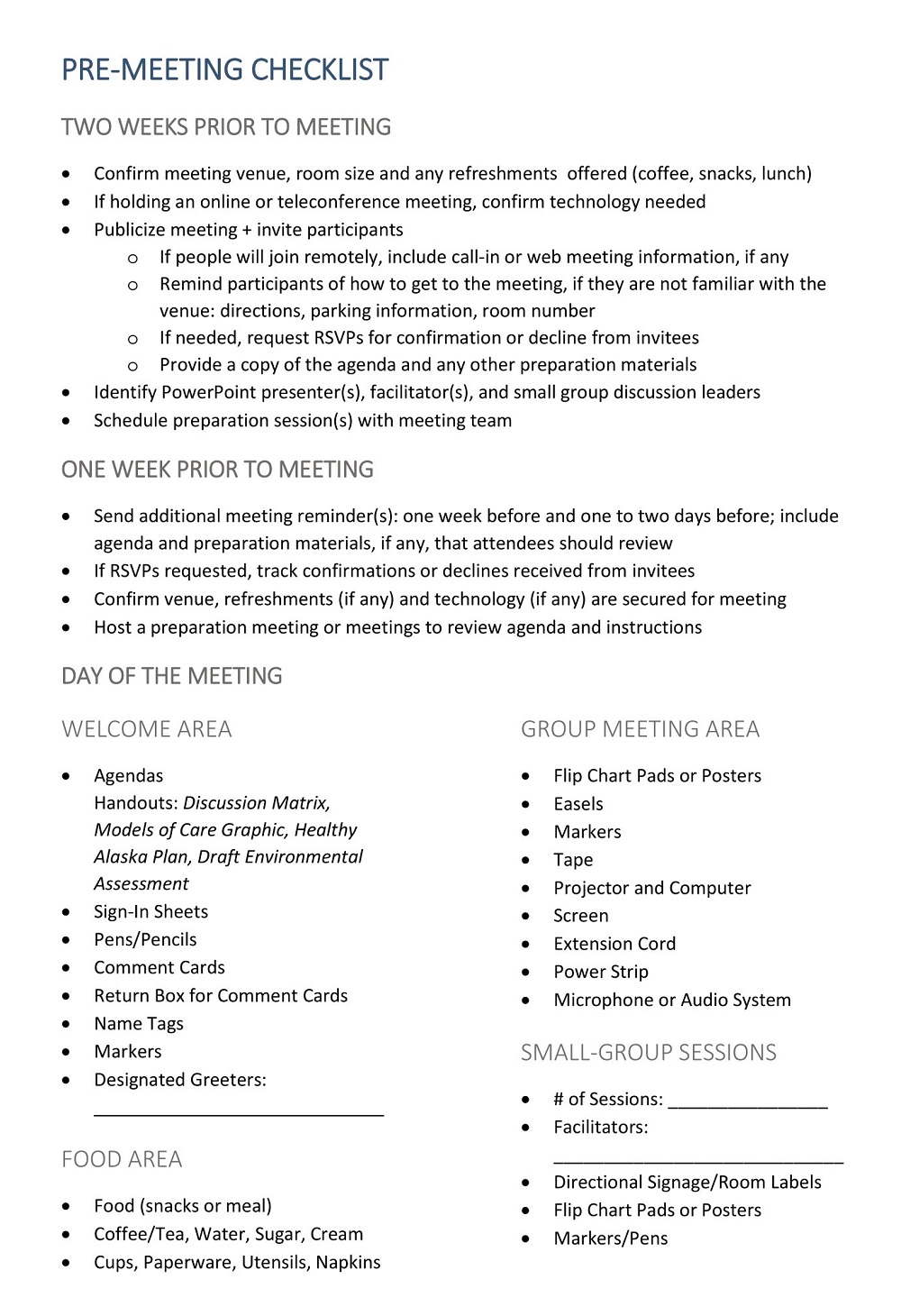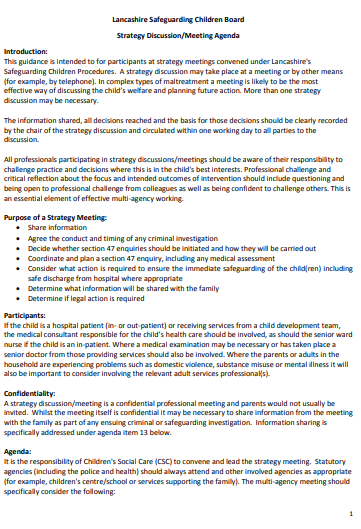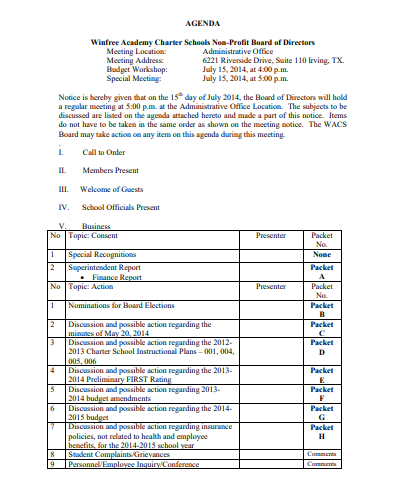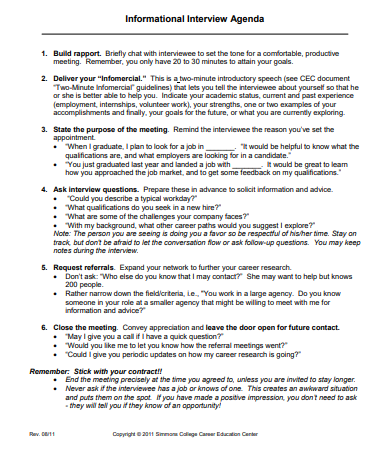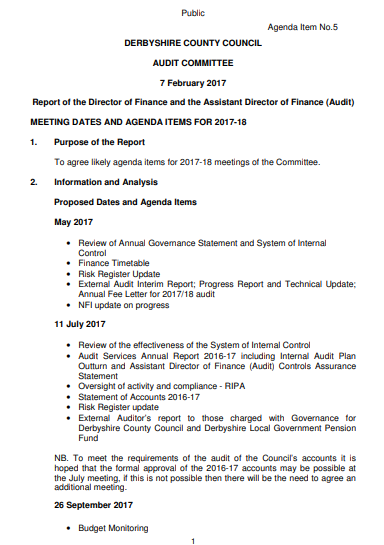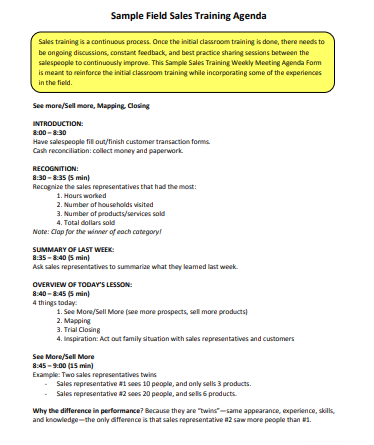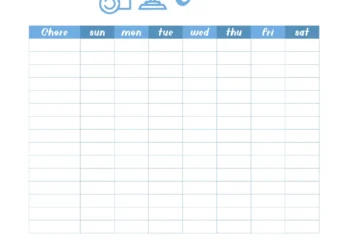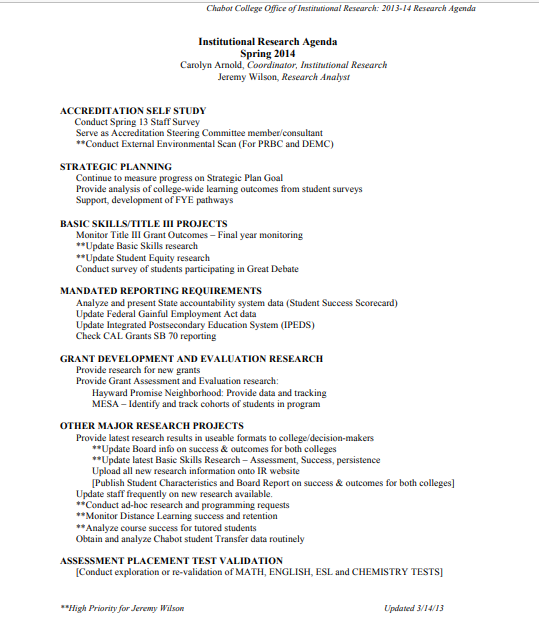A Meeting Checklist Template is a powerful tool that provides structure and organization to your meetings. This template ensures that all important aspects of a meeting are covered, from setting an agenda to assigning tasks and following up on action items. With a Meeting Checklist, you can adapt the template to your specific meeting type, whether it is a board meeting, team meeting, or brainstorming session.
By following the checklist, you can achieve your meeting goals more effectively and efficiently while keeping everyone on the same page. With a well-executed meeting, you can increase productivity, collaboration, and communication among team members. In this article, you’ll find a collection of free Simple Meeting Checklist Templates and samples in PDF, Word, and Excel format to help you make your business effective.
As you craft seamless meeting experiences using our Meeting Checklist Templates, remember the significance of accurate documentation in the nonprofit world. Dive into our Nonprofit Board Meeting Minutes Templates to ensure every discussion and decision is captured with precision. Together, they empower your organization with efficient planning and comprehensive records, enhancing the impact of every nonprofit board gathering.
Download Free Meeting Checklist Templates
Annual Meeting Planning Checklist
|
Assessment Meeting Checklist Template
|
Board Meeting Checklist Template
|
Business Meeting Checklist Template
|
Client Review Meeting Checklist Template
|
Committee Meeting Checklist Template
|
Daily Meeting Checklist Template
|
Effective Meeting Checklist Template
|
Family Meeting Checklist Template
|
Healthy Meeting Checklist Template
|
Initial Safety Meeting Checklist Template
|
Meeting and Event Checklist Template
|
Meeting Checklist Template PDF
|
Meeting Planning Assistance Checklist
|
Meeting Planning Checklist Template
|
Meeting Preparation Checklist Template
|
Meeting Room Checklist Template
|
Offsite Meeting Checklist Template
|
Pre-Meeting Checklist Template
|
Project Kick-Off Meeting Checklist
|
What is a Meeting Checklist?
Meetings are pivotal to the success of any organization. They provide a platform for individuals to come together, share ideas, brainstorm, and make decisions. However, sometimes meetings can be unproductive, causing a waste of valuable time. This is where a meeting checklist comes in handy. A meeting checklist is a tool used to ensure that all necessary items are discussed during the meeting and that it runs smoothly and efficiently. It can include items like setting an agenda, inviting participants, providing presentations and materials, ensuring technical equipment is in order, and assigning tasks to members. With the help of a meeting checklist, you can make sure that your meetings remain focused, productive, and goal-oriented. It’s a small yet powerful tool, that can make a considerable difference in the overall success of your meetings.
Benefits of Meeting Checklists
Meeting checklists are a simple yet effective tool that can bring numerous benefits to any type of meeting. With a checklist in hand, you can avoid any last-minute surprises, forgotten items, or missed tasks. By checking off items on the list, you ensure that every topic is covered and every participant is heard. Moreover, the checklist helps to keep meetings on track and within the allocated time frame, ensuring that the discussion is focused and productive. Additionally, meeting checklists promote accountability and follow-up. If someone is responsible for a specific task, the checklist ensures that it is not forgotten and is followed up on at the next meeting. This simple tool can improve the quality and productivity of any meeting, ensuring that everyone leaves with a clear understanding of what was accomplished and what needs to be done next.
Key Elements of a Meeting Checklist
In today’s fast-paced business world, meetings are an integral part of any successful organization. Whether virtual or face-to-face, meetings provide a forum for collaboration, idea-sharing, and decision-making. However, if not managed correctly, meetings can become unproductive, frustrating, and time-wasting. One effective way to ensure that your meetings run smoothly is by using a meeting checklist. Here are some key elements of a meeting checklist and how it can help you to have more successful and efficient meetings.
Purpose and Agenda
Every meeting needs a clear purpose and a well-planned agenda. The purpose of the meeting should be communicated to all participants in advance, and the agenda should be structured to address the key topics that need to be discussed. It is also important to allocate specific times to each agenda item to ensure that the meeting stays on track.
Participants and Roles
Another critical element of a successful meeting is the people who attend it. One of the most important aspects of a meeting checklist is ensuring that the right participants attend and that they understand their roles during the meeting. It is also important to ensure that all necessary stakeholders are invited and that they have the right information and documentation to participate effectively.
Technology and Logistics
In today’s remote work environment, meetings often take place via video or teleconferencing. It is crucial to ensure that all participants have access to the necessary technology and that they are familiar with how to use it. Additionally, logistical considerations such as meeting room setup, lighting, and audio quality are also critical to ensure that the meeting runs smoothly.
Follow-Up and Action Items
Finally, a meeting checklist should also include a plan for follow-up and action items. After the meeting, all participants should be clear on the critical decisions that were made and any assigned action items. It is also important to establish a follow-up process to ensure that all action items are completed on time and that progress is being made toward achieving the meeting’s goals.
Flexibility and Adaptability
While having a meeting checklist is essential to run effective meetings, it is also important to be flexible and adaptable. No appointment is ever perfect, and unexpected challenges or issues can arise at any time. Therefore, it is crucial to approach meetings with an open mind and to be prepared to adjust the plan as needed to achieve the meeting’s objectives.
Guidelines for Creating an Effective Meeting Checklist
Meetings are a necessary part of any organization, but they can quickly become time-consuming and unproductive if they are not well-organized. Creating a meeting checklist can ensure that all important points are covered, everyone knows what is expected of them, and the meeting stays on track. To create an effective meeting checklist, start by identifying the purpose of the meeting and the topics that need to be discussed. Then, break those topics down into specific agenda items and assign a time limit to each one. Don’t forget to include any necessary materials or technology that may be needed during the meeting. A well-planned meeting checklist can make all the difference in achieving your goals and getting the most out of your team’s time.
How to Create a Meeting Checklist Template
Meetings are an indispensable part of any organization. They serve as a forum to discuss new ideas, evaluate progress, and make important decisions. However, it’s not uncommon for meetings to get derailed or waste time due to a lack of structure and preparedness. One effective way to ensure that your meetings run smoothly is to create a meeting checklist.
Define the Purpose of Your Meeting Checklist
The first step in creating a meeting checklist is to identify the purpose of your checklist. What kind of meetings do you want to use your checklist for? Is it weekly team updates, monthly reports, or ad-hoc brainstorming sessions? Based on your goals, you can create a checklist that maps out the structure of your meeting, including the agenda, desired outcomes, and action items.
Determine the Key Elements of Your Checklist
Once you’ve defined the purpose of your meeting checklist, the next step is to determine the key elements of your checklist. These elements could include preparation tasks to perform before the meeting, agenda items to discuss during the meeting, and follow-up tasks to complete after the meeting. Depending on your meeting type, you can also include attendance lists, time limits, and presentation requirements.
Choose a Format for Your Checklist
In order to make your meeting checklist effective, you’ll need to choose a format that’s easy to read and follow. You can use a simple Word document or an Excel spreadsheet to create your checklist. Alternatively, you can use an online tool like Trello or Asana, which allows you to create a checklist that’s easy to update and track in real time.
Customize Your Checklist
Creating a meeting checklist can be a time-intensive task, but it’s important to take the time to customize your checklist to meet the needs of your organization. Make sure to include all the necessary elements, but don’t be afraid to make adjustments based on feedback from colleagues. Additionally, you can create multiple checklists for different types of meetings so that you have a template for each format.
Test and Refine Your Checklist
Once you’ve created your meeting checklist, it’s time to test it out. Make sure to use it consistently for each meeting and ask for feedback on how to improve it. You can also track the success of your meetings by evaluating metrics like participation, engagement, and follow-through. Over time, you can refine your checklist and adapt it to your changing needs to ensure that your meetings remain productive and efficient.
Reference Link


